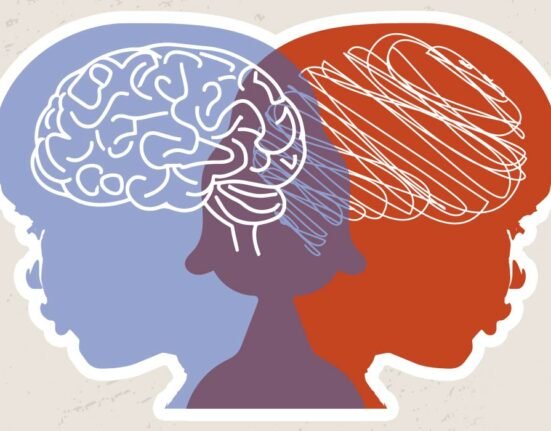Mental well-being incorporates more than just the nonappearance of mental ailments; it is the total state of being emotionally, socially, and psychologically well. A person in a state of mental well-being can supervise life’s stresses, reach their full potential, learn and work effectively, and contribute to their community. Let’s go through mental disorders, their management, and the significance of fostering a resilient mindset for a balanced life.
Mental Illness/Mental Disorder: What is It?
Mental illnesses are medical conditions that cause distress and/or interfere with an individual’s ability to function in social, professional, or familial contexts. They may involve changes in emotion, thinking, behaviour, or a combination of these.
Mental disorders are diagnosable conditions that can make a person feel stressed out and make it harder for them to function. They are characterized by changes in thinking, mood, or behavior, or by any combination of these.
The Prevalence of Mental Illnesses
Mental illness is widespread.
- Approximately one in five (19%) adult Americans suffer from a mental illness at some point in the year.
- A significant mental illness affects one in every twenty-four people (4.1%).
- One in twelve people (8.5%) suffers from a diagnosable drug use problem.
Also Read: Oppose Dowry outright, say Mental Health Experts
India’s Mental Health Issues
Like other nations, mental disorders are highly prevalent in India.
- Mental Health Statistics indicate that 60–70 million Indians suffer from severe mental illnesses (July of 2014).
- In a study done in Pune, Deswal and Pawar (2012) found that the lifetime prevalence of mental disorders was 5.03% overall.
- A study conducted by Tiwari et al (2013) in Lucknow reported the overall prevalence of psychiatric disorders at 23.7, mood disorders at 7.6, neurotic, stress-related disorder at 2.0, and Alzheimer’s disease at 2.4.
- In a study conducted in Chandigarh in 2010, Mattoo and Singh (2010) found that among 90 respondents, the prevalence of bipolar disorder (23.3), unipolar depression (25.6), OCD (7.8), and psychosis (34.4) was the highest.
- A 2005 study conducted in an urban population of Kerala found that the prevalence of dementia was 33.6 per 1000.
- In India, there are 1.5 crore individuals with severe mental illnesses. 80.8% and 48.9%, respectively, were the prevalence rates for urban and rural areas (Reddy & Chandrasekhar, 1998).
- A study conducted on elderly people with dementia, generalized anxiety disorder, bipolar disorder, alcoholism, and predominant depressive disorders found that the prevalence of mental disorders was as high as 26.7% (Seby, Chaudhury, and Chakraborty, 2011).
Indications and Signs of Mental Illnesses
- Mental wellbeing conditions make it troublesome for a person to go about their everyday life. It makes it difficult for the individual to go about their daily business in a productive way.
- An individual encounters overpowering feelings of worthlessness, helplessness, and hopelessness.
- When an individual pulls back from social interactions or is regularly by themselves, it is indicative of isolation.
- There may be signs of strained family dynamics and intimate relationship issues.
- Mood swings: prolonged, strongly emotional fluctuations that affect relationships at home or at school for several weeks.
- It’s possible to encounter extraordinary feelings or overpowering stress or fear for no apparent reason.
- Noteworthy changes in conduct or behaviour, like constant disputes are also noted.
- Failure to concentrate or remain still, results in poor performance within the workplace.
- Children with mental well-being issues may experience headaches and stomachaches rather than sadness or anxiety.
- In extreme circumstances, a few individuals may even lock in self-harming practices such as burning or cutting themselves, or they may have self-destructive contemplations or activities.
- Substance abuse refers to the excessive use of drugs or liquor that can cause harm to one’s physical or mental well-being.
Also Read: Mental health: The dark side of anime creation
Common Mental Health Conditions
The common mental health conditions affecting adults (18 years of age and above) are as follows:
1. Depression
The word “depression” refers to a broad range of mental health conditions characterised by low mood, absent positive affect (a loss of interest and enjoyment in ordinary activities and experiences), and a variety of associated emotional, cognitive, physical, and behavioural indications. The primary signs of depression in people are as follows:
- Worthlessness: People acknowledge that they are already undeserving of anything. They could consider themselves a “burden” to others.
- Hopelessness: The belief that there will be no advancement or hope for the future.
- Helplessness: Feelings of helplessness arise when individuals think that neither they nor anyone else can assist them in escaping their circumstances.
2. Generalized Anxiety Disorder (GAD)
Excessive, ongoing, and irrational anxiety about routine or day-to-day matters that interferes with daily living is the characteristic of generalized anxiety disorder (GAD). A six-month duration of anxiety symptoms is required for the diagnosis of Generalized Anxiety Disorder.
3. Obsessive Compulsive Disorder (OCD)
Seligman and Rosenhan define obsession as recurrent ideas, pictures, or urges that enter consciousness; they are frequently repulsive and extremely difficult to ignore or control. Kisker defines compulsions as obsessions manifested in behavior. Individuals who experience compulsive behaviors repeatedly engage in certain behaviors even though they are aware there is no sense to it.
There are 3 types of OCD:
- Predominantly obsessional thoughts (or) ruminations
- Predominantly compulsive acts
- Mixed obsessional thoughts and acts
- Post-traumatic stress disorder
4. Post-traumatic stress disorder
PTSD frequently arises as a result of one or more traumatic events, such as intentional acts of violence against another person, serious accidents, natural disasters, or military operations. Reliving symptoms are the most defining signs of post-traumatic stress disorder (PTSD). People who suffer from post-traumatic stress disorder (PTSD) unintentionally relive vivid and upsetting parts of the traumatic event. Recurring and disturbing intrusive images or other sensory impressions from the event, nightmares, and flashbacks—in which the person acts or feels as though the event is reoccurring—are among the symptoms.
5. Phobic Disorders
An unreasonable fear of a specific thing, circumstance, or activity is known as a phobia. It frequently comes about in a person’s consistent avoidance of the feared thing, circumstance, or action. According to Davidson & Neil, psychopathologists characterized phobia as a disturbing fear-mediated avoidance, out of extent to the danger postured by a specific object or circumstance, and undoubtedly recognized by the sufferer as groundless.
There are 3 sorts of phobia:
I. Agoraphobia:
Agoraphobia is characterized by an silly fear of being in places away from familiar setting of home. In spite of the fact that it was earlier thought to be a fear of open spaces only; presently it incorporates fear of open spaces, public places, crowded places, and any other place from where there’s no easy escape to a secure place.
II. Social phobia:
This clutter is characterized by an unreasonable fear of engaging in social interactions or performing tasks before others. Individuals typically first manifest this phobia in adolescence, focusing on the fear of being scrutinized by others, leading them to dodge social circumstances.
III. Specific phobia:
Individuals with this type of phobia experience an unreasonable fear of a specified thing or circumstance.
Also Read: Men are embracing a new Mental Health Era
6. Panic Disorder
The symptoms of panic disorder include sudden onset palpitations, chest pain, choking sensations, dizziness, and feelings of unreality (depersonalization and derealization). Additionally, panic disorder is characterized by discrete episodes of acute anxiety and a secondary fear of dying, losing control, or getting confused. For the disorder to be diagnosed, there should have been multiple severe episodes of autonomic anxiety within a month.
A Few Mental Health Facts
Psychological and mental well-being are related with good mental health. Advancing mental well-being, anticipating mental disorders, protecting human rights, and giving care for those who are affected by mental disorders are all portion of WHO’s endeavors to improve the mental well-being of both people and society as an entire.
- Serious mental sickness patients pass away 10–20 years before the average citizen.
- In 40% of low-income nations, they have not included essential medications, such as lithium carbonate mood stabilizer for bipolar disorder, which have been on the WHO Model list of basic medicines for decades.
- Depression is a common mental illness.
- Within the world, 1 in 8 people endure a mental ailment.
- Among those aged 15 to 29, suicide ranks as the fourth most common cause of death.
- The World Health Organization reports that India has an extreme deficiency of mental wellbeing specialists.
- The World Health Organization has named India as “one of the foremost depressed nations”.
- India has one of the most elevated suicide rates in the world.
- Within the first year after the COVID-19 widespread, mental well-being issues rose by 25%.
- A mental sickness, affects 1 in 5 adolescents (ages 13 to 18) or will at some point in their lives.
- The probability of encountering a mental health issue, such as major depression or generalized anxiety disorder, is about three times higher among individuals of the LGBTQ+ community.
- Mental sicknesses cause one in six years of disability around the world.
- Generally, half of all mental ailments show in their early stages before the age of 14, and three-quarters of mental ailments begin before the age of 24.
- More than one in four adults who suffer from extreme mental ailments abuse drugs.
A Great Initiative by the World Health Organization (WHO)
The World Health Organization’s Comprehensive Mental Health Action Plan 2013–2030 acknowledges the critical role mental health plays in promoting healthcare for everyone. The four main goals of the plan are to: implement strategies for mental health promotion and prevention; strengthen effective leadership and governance for mental health; provide comprehensive, integrated, and responsive mental health and social care services in community-based settings; and strengthen mental health information systems, evidence, and research.
Through the use of evidence-based technical guidelines, tools, and training materials, the WHO’s Mental Health Gap Action Programme (mhGAP) aims to close the service gap in nations, particularly those with limited resources. A prioritized list of conditions is the focus, and capacity building is directed towards non-specialized healthcare providers in an integrated manner that supports mental health at all care levels. Included in this programme is the WHO mhGAP Intervention Guide 2.0, which offers recommendations on the diagnosis, treatment, and follow-up of mental health issues to physicians, nurses, and other healthcare professionals in non-specialist settings.
Resilience for a Balanced Life
Therefore, mental health is a condition of equilibrium in which a person can meet both their basic needs and their higher function needs, is at peace with who they are, and can function well in social situations. Like any physical condition, mental illness can be treated. Most people who suffer from mental illness, manage to go about their daily lives.
People ought to treat their mental health with the same consideration that they give their physical health. Everybody has to make an effort to keep their mental health in check. A state of wellbeing known as “good mental health” enables people to manage daily stressors and carry out productive tasks. People in good mental health are also more resilient and equipped to deal with unusual and potentially harmful stressors in the most effective way possible. Promoting mental health helps people become more resilient, competent, and well-adjusted; it also helps them take better care of their mental health and gain more control over it.













Leave feedback about this